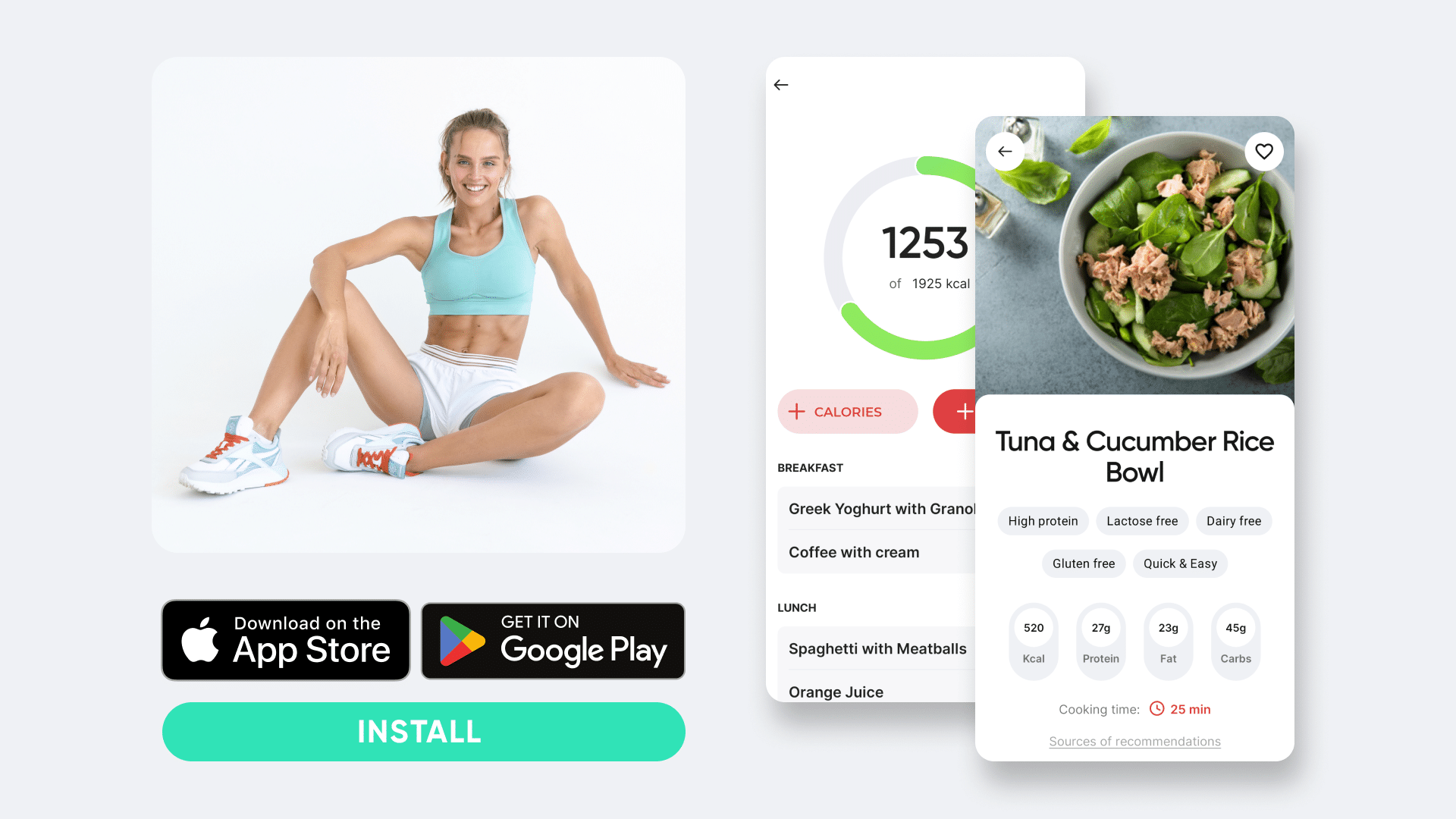The tomato is a versatile ingredient that’s globally celebrated for its vibrant color, juicy texture, and rich flavor. However, when it comes to people who are prone to IBS, tomatoes aren’t always a healthy choice. Exceeding the FODMAP limit may trigger symptoms such as bloating, gas, or diarrhea (1).
It’s important to remember that a reaction to tomatoes doesn’t always mean FODMAPs are to be blamed. Ripe, fresh tomatoes are usually safe in limited serving sizes. In contrast, some processed, canned, or jarred tomato products aren’t preferred as they’re more concentrated and may have high-FODMAP additives such as onion and garlic (3).
This article highlights different types of tomatoes and how you can add them to your diet without exceeding FODMAP limits. Whether you’re a tomato-lover or cautiously avoiding them, this guide aims to clarify the complexities surrounding tomatoes and their place in the gut-friendly diet plan.
Can I Eat Tomatoes on a Low-FODMAP Diet?
In their various forms, tomatoes are low in FODMAP at certain serving sizes. These low-FODMAP serving sizes may vary from one type to another, so it’s important to delve into their profiles and understand their position regarding FODMAPs.
Common Tomato
Available throughout the year, these tomatoes are a staple ingredient in many households. Half a small tomato in this category (65g) is considered low in FODMAPs (4), but when you reach 75g or more, you may enter the moderate- to high-FODMAP zone.
Roma Tomato
Also called plum tomatoes, Roma tomatoes are typically used for canning or producing tomato paste. The Roma tomato FODMAP is low at a 48g serving, which is approximately ⅔ of a small Roma tomato (5).
Canned Tomatoes
It can be a bit tricky to determine the right portions of canned tomatoes. As with other tomato types, going beyond the recommended serving can increase the FODMAPs, but resisting the delicious flavors requires high resistance. The low-FODMAP serving for canned tomatoes is ½ a cup or 100g (5). This means that a 400g can should be divided into 4 servings. Check your product’s label to make sure there’s no garlic, onion, or other high-FODMAP added ingredients.
Cherry Tomato
Cherry tomatoes are a yummy addition to salads and sidelines. According to Monash University and FODMAP Friendly, cherry tomatoes are low-FODMAP in small servings (5). You can enjoy 45g or 3 of these during the first phase of your diet. Watch your portion sizes though, as the fructose increases to a moderate level when you eat 60g or more.
Tomato Paste
A general understanding is that concentrated tomato paste or puree has a higher fructose content. However, the findings of Monash University suggest otherwise. They discovered that tomato paste could be categorized as low-FODMAP in two-tablespoon servings (5). This means you can still enjoy it on your pizzas and pasta.
Tomato Sauce
Tomato-based pasta and pizza sauces often contain added garlic and onion, which makes them high-FODMAP. There are low-FODMAP products out there, but they aren’t always easy to find. You can make your own sauce with tomato paste, canned tomatoes, and low-FODMAP flavorings – just keep in mind the low-FODMAP serving sizes of those ingredients.
As with every other food, finding its FODMAP level depends on its form and how much of it you eat. Different tomato products have different FODMAP levels, so you should learn about the nutrients and then decide your portions.
Looking for a way to break the vicious cycle of weight loss and tone up all the jiggly parts? Watch the extra pounds fly off and your muscles firm up with the BetterMe: Health Coaching app!
What Is the FODMAP Value of Other Tomato Products?
Tomatoes can be a part of your meals if you’re mindful of their FODMAP values. Some other tomato products tested by the Monash University include:
Sun-Dried Tomatoes
Sun-dried tomatoes make an excellent snack on crackers, but they aren’t quite FODMAP-friendly. They contain moderate fructose in a 20g serving (5). If you want to enjoy them on the low-FODMAP eating plan, limit yourself to only 8g or 3 pieces.
100% Tomato Juice
A 100% tomato juice is low-FODMAP in the serving size of 96g or ½ a glass. However, when you reach the 126g value or 2/3 glass at each meal, you start consuming moderate fructans.
Tomato Passata
Plain tomato passata can quickly reach a high-FODMAP level due to the higher fructose (6). You can enjoy ¼ cup of the passata without any worries if you’re in the first phase of the low-FODMAP diet plan, but don’t go overboard, and avoid larger serving sizes until after the reintroduction phase.
Ketchup
Don’t confuse ketchup with tomato sauce. It’s a popular condiment that’s sweetened with high fructose corn syrup or sucrose. It’s considered low-FODMAP at 13g.
Are you in the elimination phase of the low-FODMAP diet? If yes, try to stick to the serving sizes of the tomatoes listed above. These portions are safe, and you can enjoy the benefits of tomatoes without fear. However, it may not be a FODMAP issue if you’re still reacting to tomato products.
Tomatoes contain natural chemicals such as salicylates, glutamate, and amines (7). Some people are sensitive to these chemicals, which may cause problems such as hives, headaches, or stomach/bowel issues. You should talk to your doctor if you think these chemicals may be bothering you. They can figure out if you have a sensitivity and make a plan to help you feel better.
Read more: Is Broccoli Low FODMAP? Exploring the Facts.
What Is the Lowest FODMAP Vegetable?
Vegetables are healthy and quite good for your gut (8). So, when initiating a low-FODMAP diet, it’s important to have an insight into the vegetables you can eat without any worries. With clear knowledge, you can understand which vegetables are a safe snack for vegetarians and which should be off-limits.
Below are two lists: one has all the vegetables you can enjoy without stressing over portion sizes, and the other has the vegetables that can be consumed within limits.
Vegetables Allowed in Larger Amounts
These vegetables have no upper limit on daily intake:
- Arugula/rocket lettuce
- Bamboo shoots
- Collard greens
- Cucumber
- Endive leaves
- Kale
- Lettuce (e.g. iceberg, red coral)
- Olives (black and green)
- Parsnips
- Pumpkin (kabocha)
- Radishes
- Seaweed (nori)
- Spinach
- Witlof
Vegetables Allowed in Smaller Portions
Here are some vegetables that can be eaten in smaller quantities. You can combine these with other vegetables in a meal to reach your daily vegetable amount:
- Canned tomatoes: up to 100 grams
- Green beans: up to 80 grams
- Canned beetroot: up to 80 grams
- Common cabbage: up to 75 grams
- Red cabbage: up to 75 grams
- Cassava: up to 75 grams
- Bok choy: up to 75 grams
- Pumpkin: up to 75 grams
- Sweet potatoes: up to 75 grams
- Rutabaga: up to 75 grams
- Okra: up to 75 grams
- Red bell peppers: up to 43 grams
- Orange bell peppers: up to 38 grams
- Yellow bell peppers: up to 35 grams
- Acorn squash: up to 54 grams
- Fennel bulbs: up to 48 grams
- Canned peas: up to 45 grams
- Sugar pumpkin: up to 45 grams
- Brussels sprouts: up to 50 grams
- Butternut squash: up to 45 grams
- Zucchini/courgette: up to 65 grams
- Canned artichoke hearts: up to 50 grams
Navigating these lists shows plenty of vegetables can be enjoyed while staying within FODMAP limits. It doesn’t end here, and we’ve also provided a list of some vegetables that should be avoided at all costs if you’re in the elimination phase of the FODMAP diet:
- Asparagus
- Beetroot (fresh)
- Cauliflower
- Celery
- Garlic
- Onions
- Mushrooms (button, portobello, shiitake, chanterelle)
- Peas (snow or sugar snap)
During the reintroduction phase of the diet, you’ll gradually start to add foods from each FODMAP group back into your meals, one group at a time. If everything goes well, you can enjoy some of these vegetables again.
When you’re combining vegetables, it’s essential that you’re careful about using vegetables that contain the same FODMAP in a single meal. For example, a serving of 50 grams of tomatoes is low-FODMAP, but 65 grams contains moderate fructose. Similarly, 30 grams of red bell pepper is low-FODMAP, while 45 grams contains moderate fructose.
You shouldn’t have any issues if you eat 50 grams of tomato or 30 grams of bell pepper individually. However, combining them in one meal may push you over the limit for fructose, potentially causing digestive problems (9). The two tips you should follow when eating vegetables in a low FODMAP diet are:
- Spread your vegetable intake throughout the day. For example, add some broccoli and cucumbers for lunch and dinner and then eat cherry tomatoes as a snack later in the day.
- Combine vegetables in a single meal and pick some from different FODMAP groups. You can also take them in modified forms such as vegetable chips. But first, find answers to complex questions such as, are vegetable chips healthy? This can help you make informed decisions.
Soups and salads are excellent ways to consume vegetables from different FODMAP groups simultaneously. You can also look for other delicious recipes to ensure you get your daily vegetable intake without overwhelming the FODMAP limits.
Using an app like those from Monash University and FODMAP Friendly can really help you navigate this tricky elimination diet which, thankfully, doesn’t last forever. Working with a registered dietitian is also essential and you shouldn’t try to do this on your own.
BetterMe: Health Coaching app is a foolproof way to go from zero to a weight loss hero in a safe and sustainable way! What are you waiting for? Start transforming your body now!
Why Are Canned Tomatoes Low in FODMAP?
Canned tomatoes are low in FODMAPs due to their portion size and the way they’re processed. Here’s why:
Portion Control
The Monash University FODMAP guidelines indicate that canned tomatoes are low in FODMAPs when consumed in portions of up to 100 grams. This serving size is generally well-tolerated by individuals with IBS and other digestive disorders.
Processing Method
The canning process often involves the removal of some of the liquid content from the tomatoes, which can help reduce the FODMAP concentration. In addition, the heat treatment during canning can break down some of the FODMAP compounds, which makes them less likely to cause digestive issues (10).
Ingredients and Composition
Canned tomatoes typically consist of tomatoes and juice, with minimal added ingredients. This simplicity helps keep the FODMAP content low, unlike more complex tomato-based products such as sauces, which may contain high-FODMAP ingredients such as garlic and onions.
Tomato Varieties and Ripeness
The type of tomatoes used in canning and their ripeness during processing can also influence FODMAP levels. Generally, canned tomatoes are made from ripe tomatoes with a different FODMAP profile from unripe ones.
Understanding these factors can help those on a low-FODMAP diet enjoy the culinary versatility of canned tomatoes while effectively managing their digestive health.
Read more: Is Corn Low FODMAP? Best Kinds and Correct Serving Sizes
FAQs
Are orange tomatoes low in FODMAP?
Research on the FODMAP content of orange tomatoes is limited. However, most varieties of fresh tomatoes, including common red tomatoes, are considered low-FODMAP in small to moderate servings (around 65-75 grams, or approximately half a medium tomato). Nebraska tomatoes, which are yellow, are low-FODMAP in servings up to 100 g (11). Orange tomatoes likely follow a similar pattern, but it’s important to be mindful of portion sizes.
What are the worst FODMAP foods?
Foods that contain wheat, garlic, onions, and rye are considered high in FODMAPs and, therefore, worst for those prone to IBS who are in the elimination phase of a low-FODMAP diet. Some fruits such as watermelons, apples, mangoes, and pears are also high in FODMAPs.
What foods are surprisingly low-FODMAP?
Kiwi, strawberries, bananas (especially unripe), carrots, potatoes, rice, and quinoa are surprisingly low-FODMAP. They’re often well-tolerated and won’t trigger IBS symptoms in many people. However, individual tolerance varies, which is the point of a low-FODMAP diet – to identify your individual triggers so you can avoid them in the future.
The Bottom Line
Tomatoes are considered a fruit, but they’re commonly prepared and eaten as vegetables. Tomatoes and bell peppers are versatile ingredients that are frequently used in main courses, side dishes, and various cuisines such as Spanish, Italian, Middle Eastern, and Mexican due to their unique blend of sweetness, tartness, and tangy flavors.
We can conclude that most varieties of tomatoes are low-FODMAP in limited serving sizes. Make sure that you eat those that were tested by Monash University or FODMAP Friendly in the right amounts to avoid unwanted IBS symptoms. Packed with vitamins and minerals, they’re your secret weapon for a stronger immune system and a healthier you. You should make it a rule to study every food item’s nutritional profile before you add them to your diet.
DISCLAIMER:
This article is intended for general informational purposes only and does not serve to address individual circumstances. It is not a substitute for professional advice or help and should not be relied on for making any kind of decision-making. Any action taken as a direct or indirect result of the information in this article is entirely at your own risk and is your sole responsibility.
BetterMe, its content staff, and its medical advisors accept no responsibility for inaccuracies, errors, misstatements, inconsistencies, or omissions and specifically disclaim any liability, loss or risk, personal, professional or otherwise, which may be incurred as a consequence, directly or indirectly, of the use and/or application of any content.
You should always seek the advice of your physician or other qualified health provider with any questions you may have regarding a medical condition or your specific situation. Never disregard professional medical advice or delay seeking it because of BetterMe content. If you suspect or think you may have a medical emergency, call your doctor.
SOURCES
- Restriction of FODMAP in the management of bloating in irritable bowel syndrome (2016, ncbi.nlm.nih.gov)
- Food Allergy and Intolerance: A Narrative Review on Nutritional Concerns (2021, researchgate.net)
- Are Processed Tomato Products as Nutritious as Fresh Tomatoes? Scoping Review on the Effects of Industrial Processing on Nutrients and Bioactive Compounds in Tomatoes (2022, ncbi.nlm.nih.gov)
- Are Tomatoes Low FODMAP? (2024, healthylife.com.au)
- FODMAP FRIENDLY APP (n.d., fodmapfriendly.com)
- Dietary fructose intolerance, fructan intolerance and FODMAPs (2015, ncbi.nlm.nih.gov)
- Sensitivity to food additives, vaso-active amines and salicylates: A review of the evidence (2015, researchgate.net)
- Modulation of gut microbiota: The effects of a fruits and vegetables supplement (2022, ncbi.nlm.nih.gov)
- Health implications of fructose consumption: A review of recent data (2010, ncbi.nlm.nih.gov)
- Strategies for Producing Low FODMAPs Foodstuffs: Challenges and Perspectives (2023, ncbi.nlm.nih.gov)
- Are Tomatoes & Tomato Products Low FODMAP? (2024, fodmapeveryday.com)










